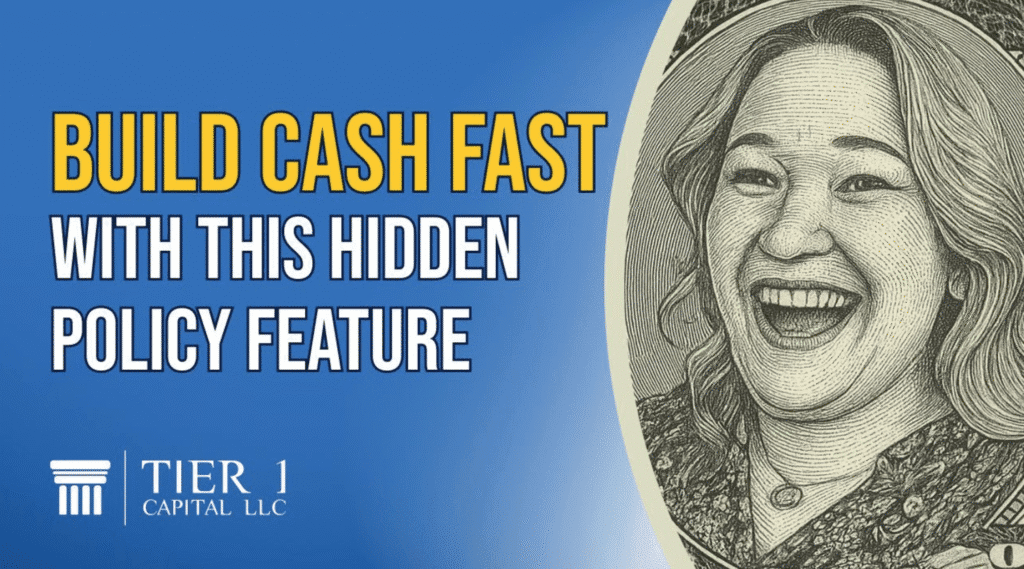
You hear us talk about whole life insurance designed for cash value accumulation all the time. But today, we’re going to dive into what actually makes a whole life insurance policy effective for building cash value. And it comes down to one key feature: the Paid-Up Additions Rider.
A whole life insurance contract is already efficient. By design, the cash value continues to grow throughout the life of the policy. In fact, the insurance company promises that the cash value will equal the death benefit at the age of maturity typically age 100 or 121.
But when these policies are specifically structured for cash accumulation, we add a rider, a kind of financial supercharger that accelerates the growth of your cash value so you can use the policy much sooner for major capital purchases.
This rider is called the Paid-Up Additions (PUA) Rider. What you’re really doing is buying a single-premium, paid-up whole life insurance policy inside the framework of your standard whole life policy. It’s like stuffing small, fully paid-up policies into the main policy structure.
Think of your whole life policy as a pool of money, and the Paid-Up Additions Rider as extra buckets of water you’re pouring in to fill that pool faster.
Even better when you buy a PUA Rider from a mutual insurance company, those paid-up additions earn dividends. So, over time, your total dividend payout can grow significantly. This is one way to increase your dividend pot.
You’re earning interest on the base policy value, and these PUAs act as an added cash value component, allowing your policy to grow even faster. With PUAs, you typically have immediate access to 85% to 95% of that contribution as cash for a policy loan.
We always view financial strategies through the lens of control. When your money remains inside the policy and you take a collateralized loan against it, you’re deploying your money elsewhere without interrupting the growth within the policy. This is especially effective when your policy is issued by a non-direct recognition company, meaning the loan does not affect the dividend performance.
A traditional whole life policy becomes naturally efficient over time. But in the early years, years 1 through 5 the available cash value is limited. That’s where the Paid-Up Additions Rider shines. It builds up early liquidity for funding life goals, paying off debt, saving for a car, making large purchases, taking vacations, or even replacing appliances.
Once the policy matures and becomes efficient on its own, you no longer need the rider. The base policy carries the value from there. In fact, it’s common to drop the PUA Rider after 7 to 10 years.
The PUA Rider also adds flexibility. It allows you to contribute more to your policy without increasing your long-term premium commitment. You’re not obligated to make a PUA contribution every year, which helps alleviate a major concern many people have: the fear of long-term premium obligations.
You can structure these policies with a higher premium including PUAs for the first 7 to 10 years. After that, the PUA Rider drops off, and your premium significantly decreases. This lower ongoing premium makes the policy more manageable for the long haul whether that’s 10, 20, 30, or even 40 years into the future.
And even if your cash flow dries up before the PUA Rider’s term ends, say in year 3 or 4, you’re not required to keep contributing. That flexibility is one of the biggest reasons people are drawn to this structure.
Paid-Up Additions can also be a lifesaver during tough times. Life isn’t a straight path. Twists, turns, and setbacks happen. In those moments, access to cash is key. If you had the foresight to add a PUA Rider early, that cash value can be the difference between surviving and struggling during financial uncertainty.
Using whole life insurance as a place to store your emergency fund is a smart move. Not only are you earning uninterrupted compound interest, but you’re also protected with a death benefit, and many policies include a waiver of premium in case of disability. By building up cash value early, you’re creating a financial safety net when the unexpected hits.
As we’ve mentioned in previous videos, Paid-Up Additions also increase your dividend potential. When you view your policy through the lens of control, you realize you can influence future dividends by increasing your PUA contributions. While dividends aren’t guaranteed and are issued at the insurer’s discretion, PUAs raise your cash value so if dividends are paid, you’ll receive a greater share.
If you’d like to learn more about how Paid-Up Additions can help you design a whole life insurance contract built for cash accumulation, to benefit your life, your family, and your business, visit our website at www.tier1capital.com and click the “Schedule Your Free Strategy Session” today. We’ll help you evaluate whether your policy can be rescued and whether a transfer makes sense.
Thanks for reading, and remember it’s not how much money you make, it’s how much money you keep that really matters.
